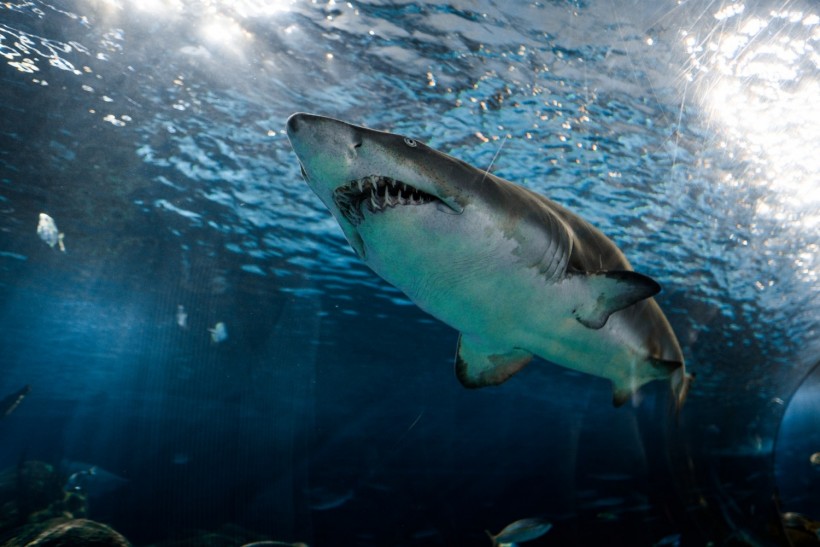A 1,500-pound great white shark that had been enjoying the southern seas around Melbourne "pinged" off the east coast of Florida.
Marine research group OCEARCH had a tracking device installed on the shark, known as "Breton," Tampa Free Press reported.
When the shark's dorsal fin breaches the water's surface, the tag "pings." When this occurs, the gadget sends out a signal that allows OCEARCH researchers to locate it. Breton has covered 19,573 kilometers in 409 days since being tagged.
He is now off the Sunshine State's east coast.

Great White Shark
1,500 Pound Great White Shark Shows Up On Florida
Breton pinged in the Atlantic Ocean about 60 miles east of Anastasia Island on Florida's east coast on July 24. On July 12, the shark was pinging farther south along the Florida coast, Newsweek reported.
Breton is a 13.3-foot-long, 1,437-pound adult male great white shark. On Sept. 12, 2020, OCEARCH scientists tagged him for the first time on Canadian seas close to Cape Breton in the province of Nova Scotia.
The shark was given that name by OCEARCH researchers in honor of the province's easternmost island, Cape Breton.
In two years of operating in the region, Breton is the sixth shark that OCEARCH has tagged at Scatarie Island, located close to Cape Breton Island.
Breton has reportedly traveled a remarkable 19,500 kilometers after being tagged, according to OCEARCH. It equates to almost four-fifths of the diameter of the Earth.
During the time that OCEARCH has been following him, Breton has been swimming in the seas off the coast of the southeastern United States, venturing further out into the Atlantic, and hanging around in the waters close to Cape Breton.
ALSO READ: Great White Shark Dies After Trying to Attack Divers in Metal Cage [LOOK]
Why Shark Encounters Are Increasing
Experts speculate that conservation victories for threatened species cause the increase in shark encounters along US East Coast. At the same time, there may also be a connection to climate as the food of apex predators migrate to new seas.
The number of great whites peaks between August and October as they migrate up the American Atlantic coast into New England each summer.
"There's a general increase in the population that we think is the population rebounding after being protected," Gregory Skomal, a senior fisheries scientist for Massachusetts, told AFP (via Phys.org).
The fact that their primary prey, seals, are recovering due to better safeguards is a significant contributing factor.
Senior scientist Nick Whitney at the New England Aquarium thinks the rise in sightings might be attributed to the menhaden, often known as porgies or bunkers, which serve as the sharks' primary food source, rebounding.
Cleaner seas off New York and New Jersey may be to blame for this. Whitney remarked that it might be challenging to distinguish between population growth and simple population movement brought on by shifting ocean conditions due to climate change.
RELATED ARTICLE: Great White Shark Captured on Camera in a Bloody Encounter With Seal as It Attacked and Ate Its Prey Turning the Water Red
Check out more news and information on Animals in Science Times.














